Installing Transhield Boat Covers: Best Practices for Transit
Installation
The protection of boats during storage and transport is critical for manufacturers to avoid costly damage, resulting in warranty claims and increased repair costs. Transhield has served the marine market with custom-fit covers for 30 years, building a reputation for reliability, efficiency, and superior protection compared to traditional methods like shrink wrap and tarping.
However, the effectiveness of Transhield covers heavily relies on their correct installation. Below, you will find some helpful best-practice principles that will ensure your Transhield cover is properly installed, ready to withstand the rigors of over-the-road transit.
Centering the Cover
The first step in a Transhield cover installation is to ensure the cover is precisely centered on the boat. An off-center cover can lead to uneven protection, potentially exposing parts of the boat to damage. The cover should have an even drape along the boat’s perimeter, allowing enough material to snugly fit under the chine on the sides. This approach provides comprehensive coverage and helps prevent the intrusion of road grime. It also minimizes the risk of wind tunneling into gaps during transit, which could lead to the total loss of the cover.
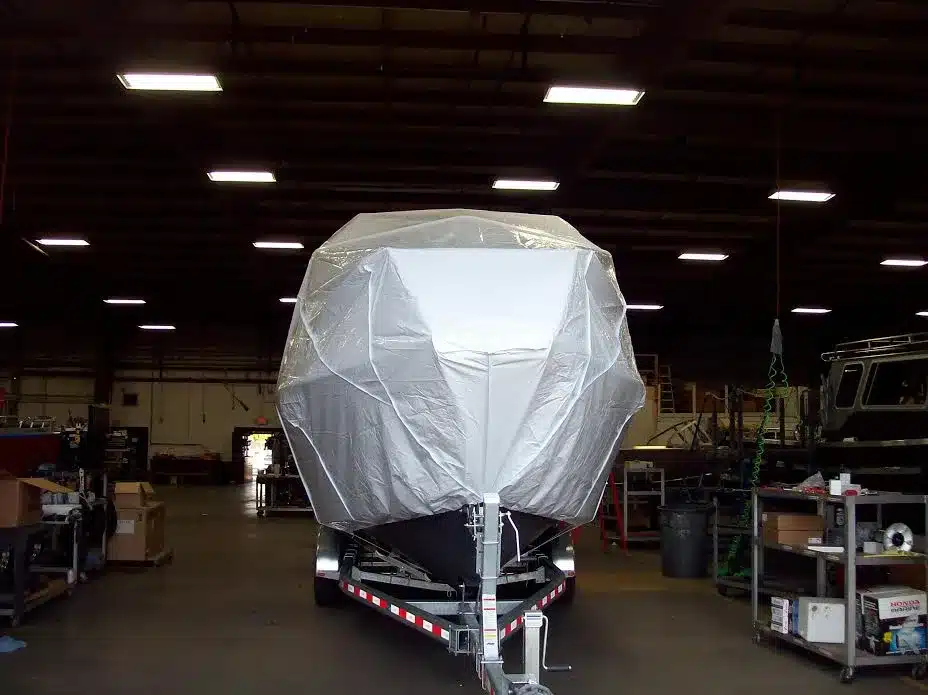
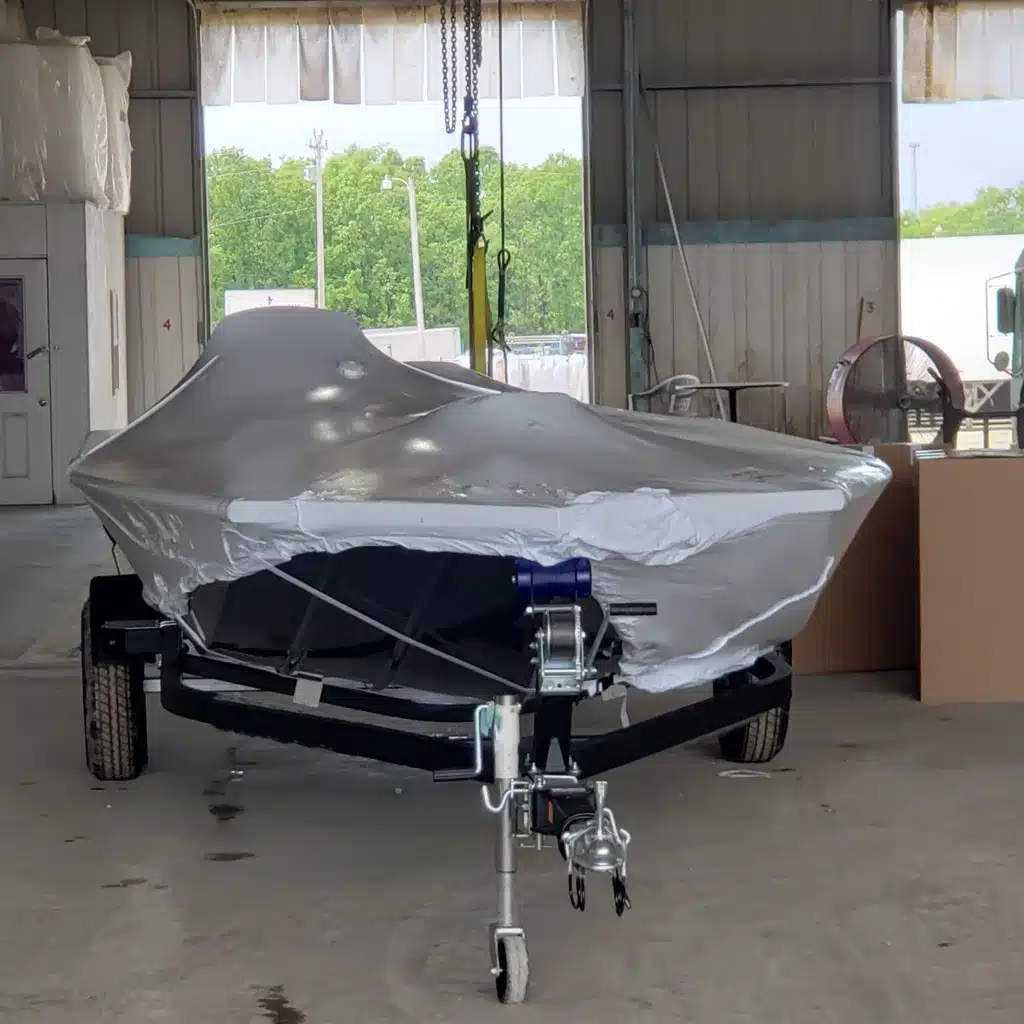
Proper Securement
After the cover has been centered on the boat, it’s time to secure it using the pre-installed securement methods incorporated into the cover. A typical method for securing a Transhield boat cover includes using a perimeter rope or back-to-back ratchet straps at the back of the cover, in conjunction with multiple tie-down points along the bottom perimeter. These securement points are essential to the installation process, anchoring the cover securely during transit. They play a crucial role in ensuring the cover remains tightly fitted, particularly across the boat’s width, where the risk of shifting is higher.
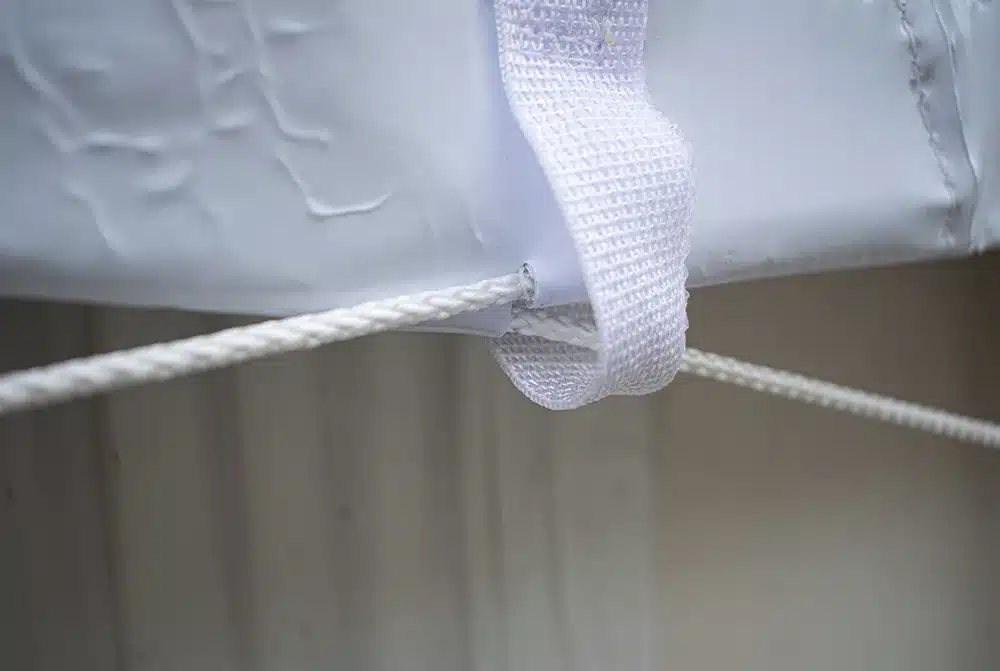
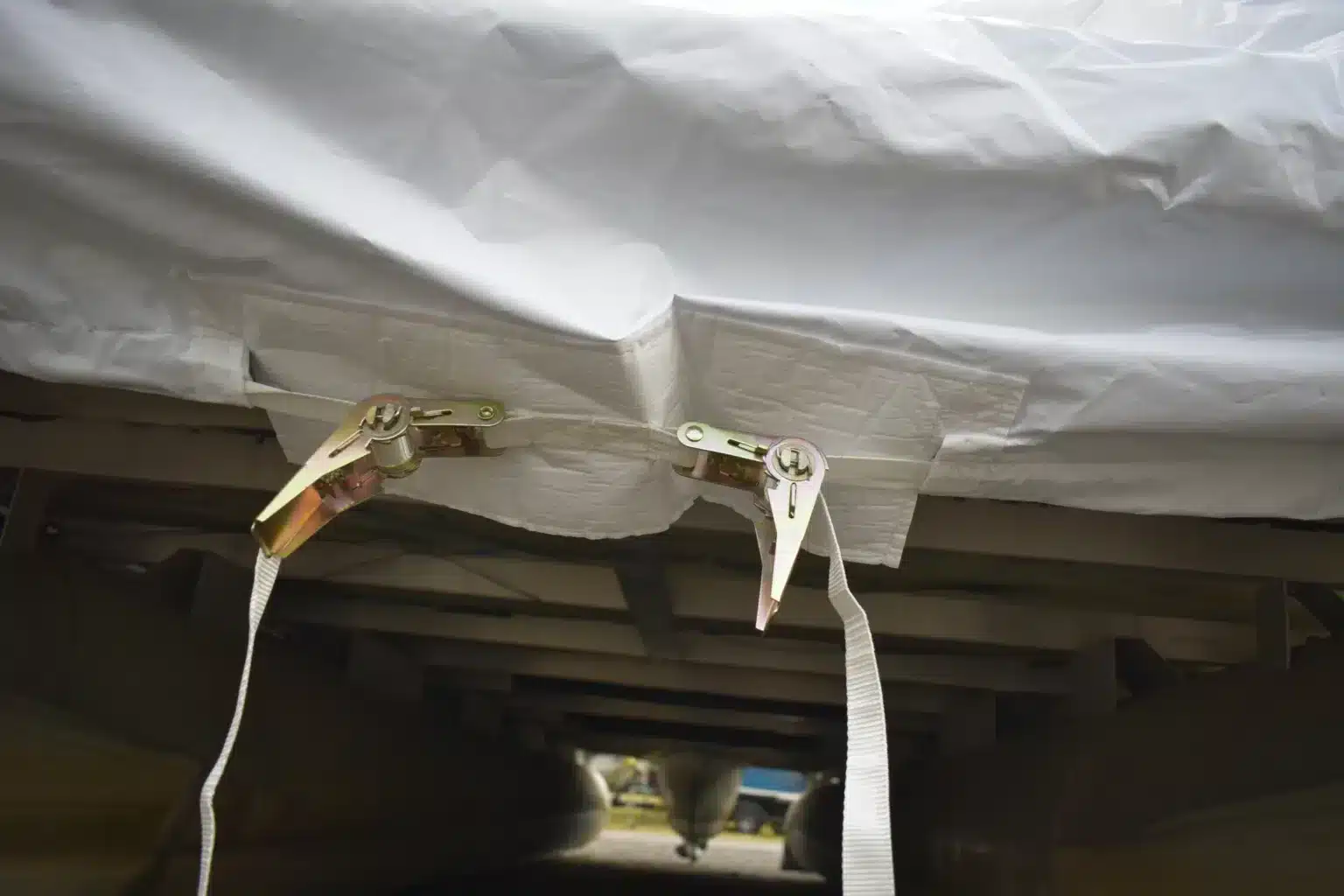
Coverage Underneath the Chine
For optimal protection, especially for larger boats, it is essential to pay attention to how much of the cover is tucked under the chine. We suggest a minimum of six to ten inches for standard boats. Larger boats may require anywhere from eight to twelve inches or more. Tucking this extra material under the chine significantly reduces the likelihood of the cover coming loose or allowing air to infiltrate underneath, which could compromise the cover’s integrity and potentially lead to failure.
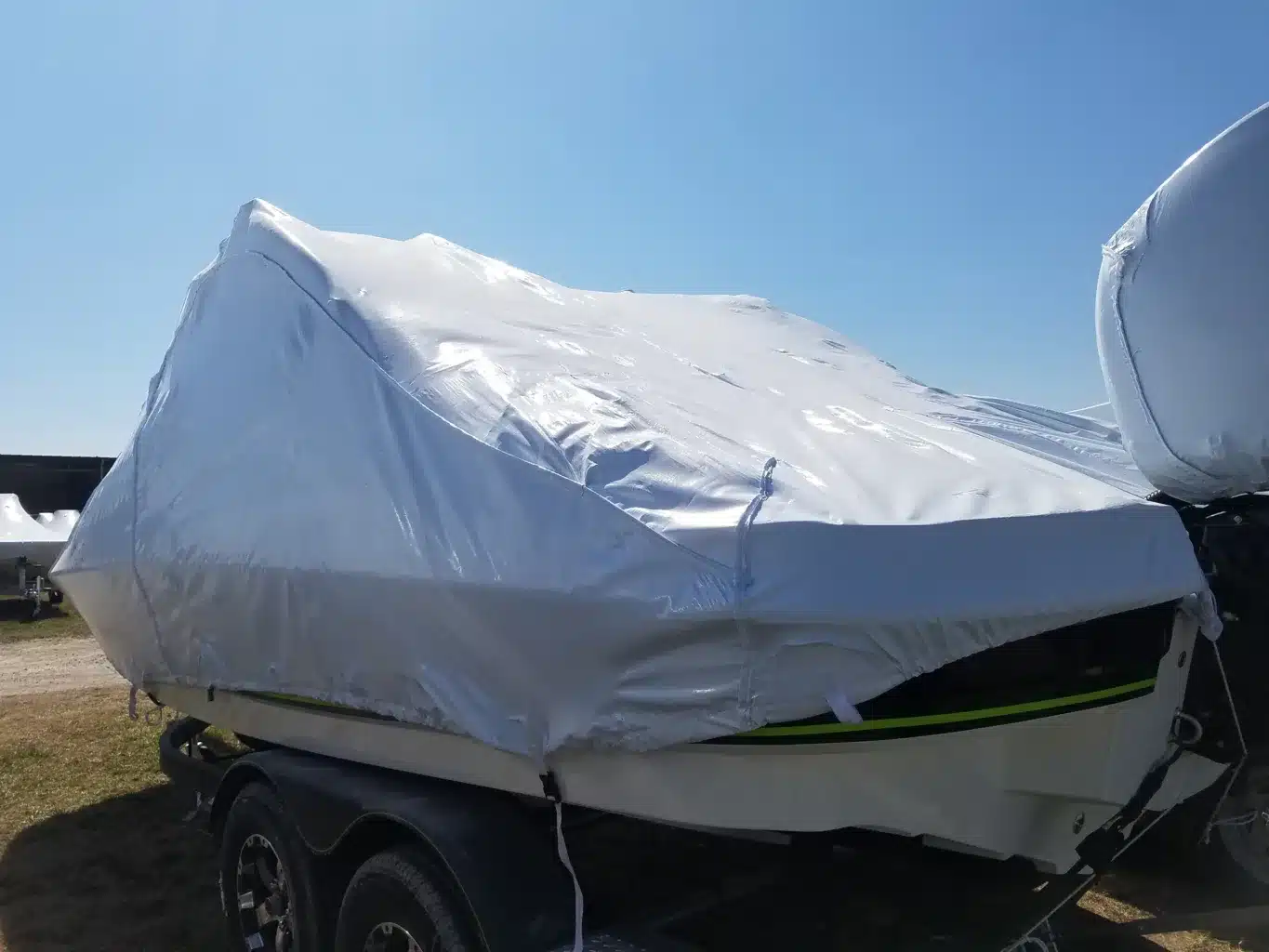
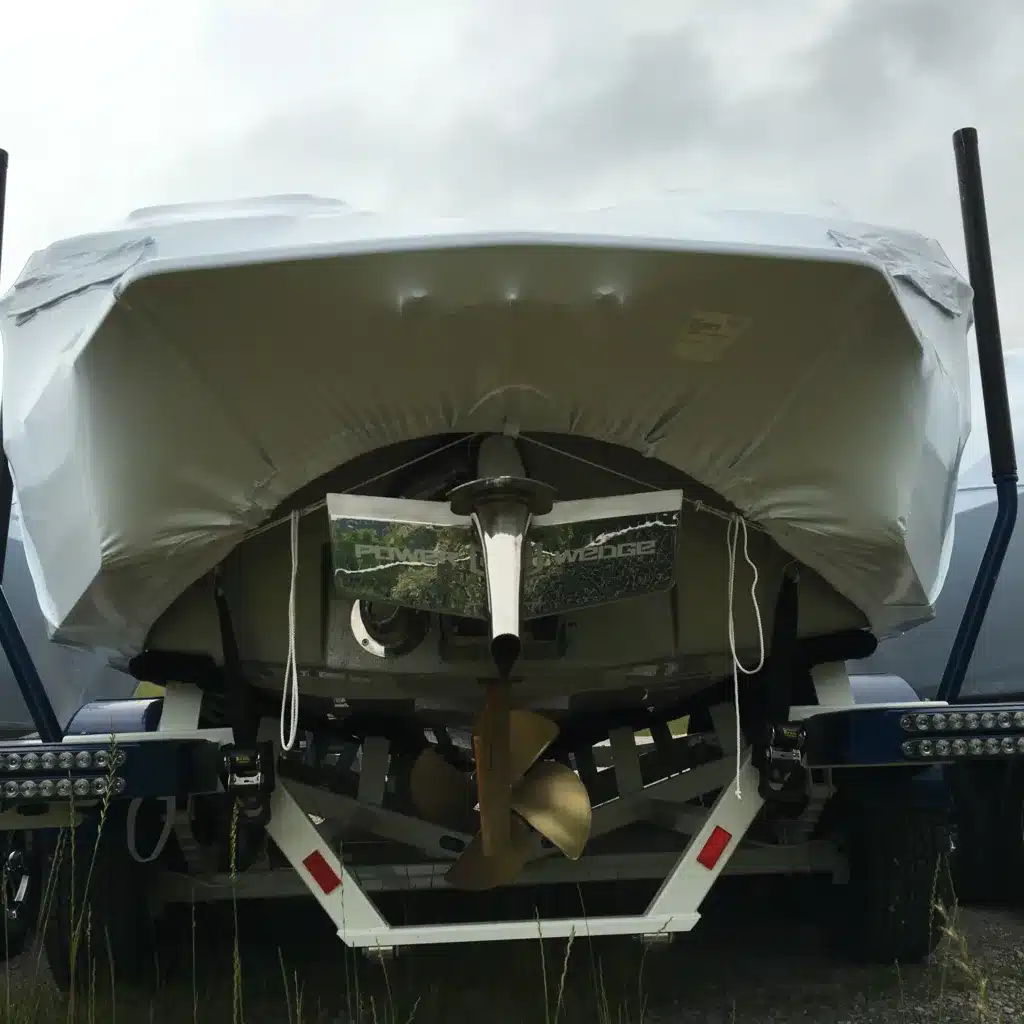
Re-tightening After Heat Shrinking
After heat shrinking the cover for a tailored fit to the boat, it’s crucial to retighten the perimeter rope and all belly bands. The heat shrinking process creates extra slack, loosening both the perimeter rope and tie-down points. By retightening all securement points, you ensure the cover remains as secure as possible against the boat.
Creating Standard Operating Procedures
To support the consistent and effective installation of Transhield covers, developing standardized operating procedures (SOPs) for your installers can be incredibly beneficial. These guidelines act as a blueprint, streamlining the installation process for both new and seasoned installers and guaranteeing maximum protection for the boat. By leveraging these tools, installers can gain a deeper understanding of the nuances involved in securing a boat for transit, ensuring the longevity and safety of the vessel.
When onboarding to Transhield, we can create a custom installation document or video specifically for your boat model. However, if you’re just starting out with Transhield, we’ve developed this handy best-practices document for installing a Transhield boat cover:
Please note: this installation guide is for Transhield’s custom fit boat covers that are made for transit, it is NOT for Transhield’s universal fit, winter storage boat covers.
Secure your boat with confidence
In conclusion, the proper installation of Transhield boat covers is crucial for safeguarding your boats during transport. By accurately centering the cover, ensuring adequate coverage under the chine, securing all anchor points properly, and then tightening them again after heat shrinking, boat manufacturers can guarantee that their new boats are well-protected against the elements and the rigors of over-the-road transit. With the right approach and resources, the integrity of your boat is preserved, guaranteeing peace of mind as you transport it to your customer’s destination.


